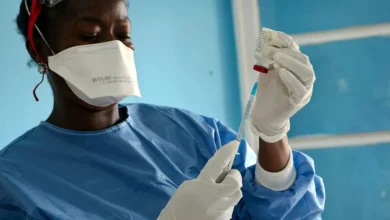
A newly confirmed Ebola outbreak in the Democratic Republic of Congo’s southern Kasai province has seen a sharp rise in suspected cases, more than doubling within a week, according to the Africa Centers for Disease Control and Prevention (Africa CDC). The number of suspected infections has surged from 28 to 68, and the virus has now spread across four districts up from two while the death toll has reached 16.
This marks Congo’s first Ebola outbreak in three years and the first in Kasai province in over a decade. The region’s isolation and poor infrastructure located more than 1,000 kilometers from the capital, Kinshasa pose significant challenges to containment efforts.
Dr. Ngashi Ngongo, a senior advisor with Africa CDC, warned that ongoing conflict in eastern Congo could further complicate the response. “It was two districts, now it is four,” he said, highlighting the rapid expansion of the outbreak.
The outbreak was first identified after a pregnant woman in Bulapé tested positive for the virus. In response, the World Health Organization (WHO) has deployed experts alongside Congo’s Rapid Response Team to bolster surveillance, treatment, and infection control.
Congo has faced 16 Ebola outbreaks since the virus was first identified in 1976, with the most devastating between 2018 and 2020, claiming over 1,000 lives in the east. This latest outbreak is the seventh in Kasai province.
Local authorities have imposed movement restrictions and established checkpoints at key entry points to Tshikapa, the provincial capital, in an effort to contain the spread. Residents remain anxious. Emmanuel Kalonji, a 37-year-old from Tshikapa, noted that while some villagers initially fled, many have returned due to limited resources. “Survival is not guaranteed,” he said.
In Bulapé, concerns over deteriorating living conditions are mounting. Ethienne Makashi, the local official overseeing water, hygiene, and sanitation, acknowledged the strain but offered a glimmer of hope: “We do have one case showing good progress, which gives hope to those receiving care.”
As health teams race to contain the outbreak, the situation remains precarious, with both logistical hurdles and community vulnerability complicating the path forward.


